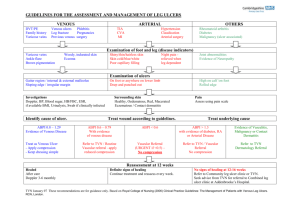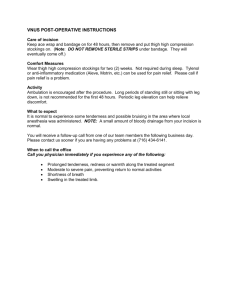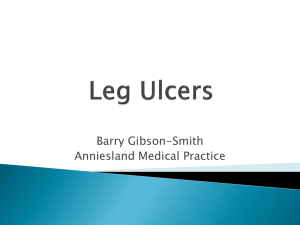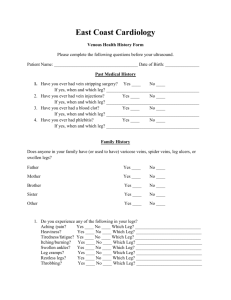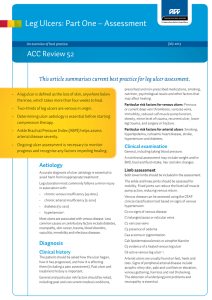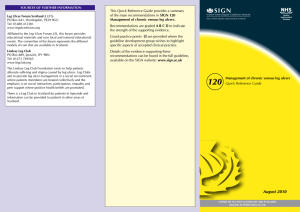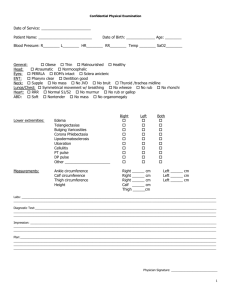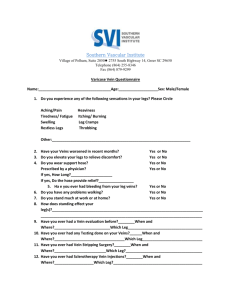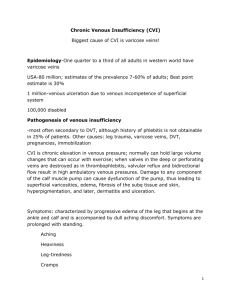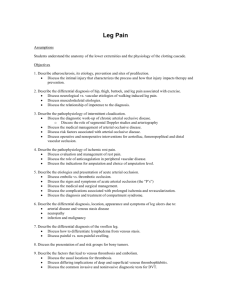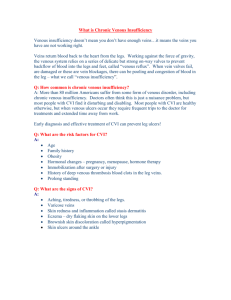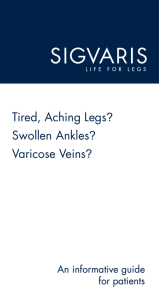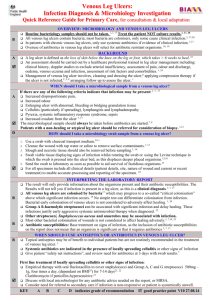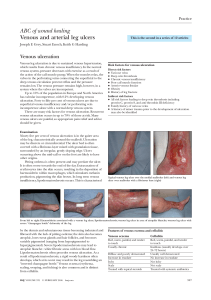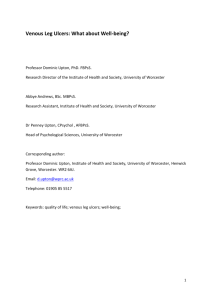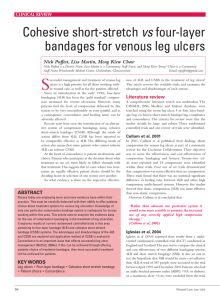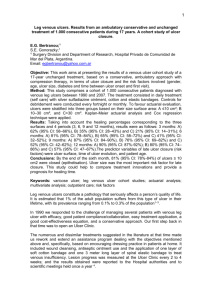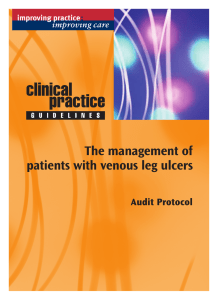Quiz 3 - MS Word 2007 document ()
advertisement
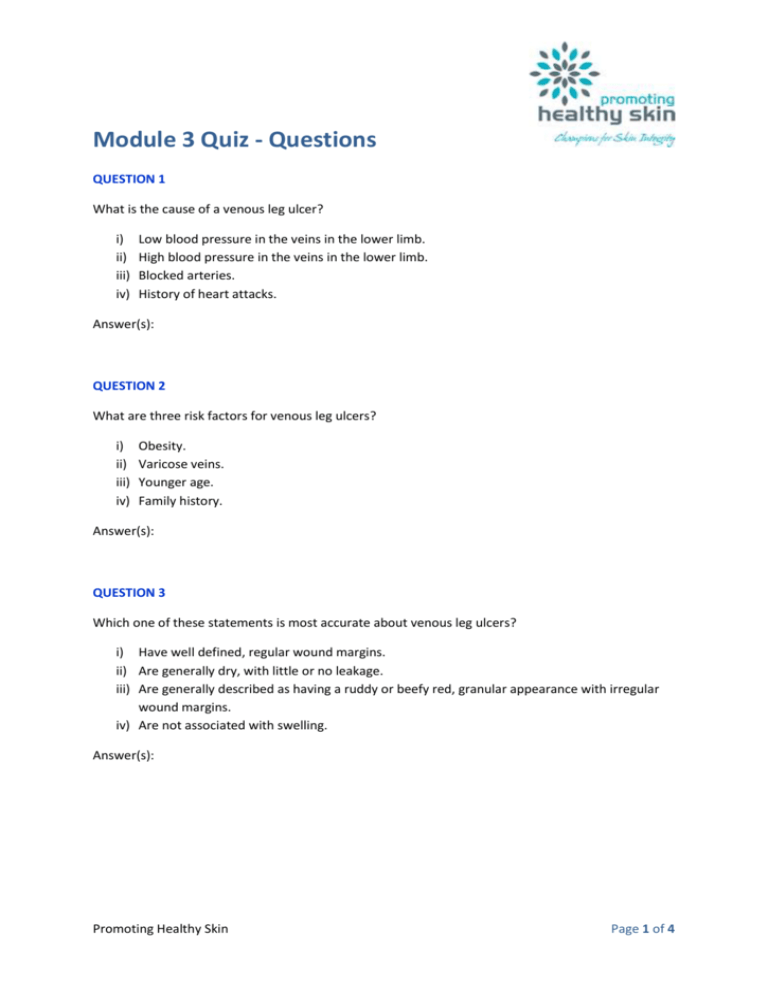
Module 3 Quiz - Questions QUESTION 1 What is the cause of a venous leg ulcer? i) ii) iii) iv) Low blood pressure in the veins in the lower limb. High blood pressure in the veins in the lower limb. Blocked arteries. History of heart attacks. Answer(s): QUESTION 2 What are three risk factors for venous leg ulcers? i) ii) iii) iv) Obesity. Varicose veins. Younger age. Family history. Answer(s): QUESTION 3 Which one of these statements is most accurate about venous leg ulcers? i) Have well defined, regular wound margins. ii) Are generally dry, with little or no leakage. iii) Are generally described as having a ruddy or beefy red, granular appearance with irregular wound margins. iv) Are not associated with swelling. Answer(s): Promoting Healthy Skin Page 1 of 4 Module 3 Quiz - Questions QUESTION 4 Is this a typical example of a venous leg ulcer? i) True. ii) False. Answer(s): QUESTION 5 Is this a typical example of a venous leg ulcer? i) True. ii) False. Answer(s): QUESTION 6 Is this a typical example of a venous leg ulcer? i) True. ii) False. Answer(s): Promoting Healthy Skin Page 2 of 4 Module 3 Quiz - Questions QUESTION 7 Venous leg ulcers are characterised by: i) ii) iii) iv) Pain at night when the client’s legs are elevated. Pain when walking. No pain. Pain that is relieved by elevating the legs above heart level. Answer(s): QUESTION 8 After a leg ulcer has been assessed and diagnosed as a venous leg ulcer, what is an evidence based treatment you could use to manage the ulcer? i) ii) iii) iv) v) Apply a dressing and secure with a crepe bandage. Leave the wound open to dry in the sun. Apply an antimicrobial dressing. Apply a compression bandage or stocking. Change the compression bandaging twice a day. Answer(s): QUESTION 9 What should you consider before applying a compression bandage? i) ii) iii) iv) Skin condition. Shape of the lower leg. Lack of sensation. Other health conditions such as heart disease. Answer(s): Promoting Healthy Skin Page 3 of 4 Module 3 Quiz - Questions QUESTION 10 What can you do to prevent venous leg ulcers? i) ii) iii) iv) v) vi) vii) Provide compression bandages or compression stockings. Ensure clients elevate their legs. Encourage clients to lift weights. Ensure clients do ankle and calf muscle exercises. Encourage clients to cross their legs when sitting. Check the lower legs daily for signs of swelling or skin breakdown. Ensure clients stand or sit in the same position for a long time. Answer(s): QUESTION 11 Graduated compression stockings should be replaced at least every: i) ii) iii) iv) 6 months. 9 months. 12 months. 24 months. Answer(s): QUESTION 12 What is the correct height for leg elevation? i) ii) iii) iv) At waist height. Higher than the heart. Flat in bed. Below waist height. Answer(s): Promoting Healthy Skin Page 4 of 4
